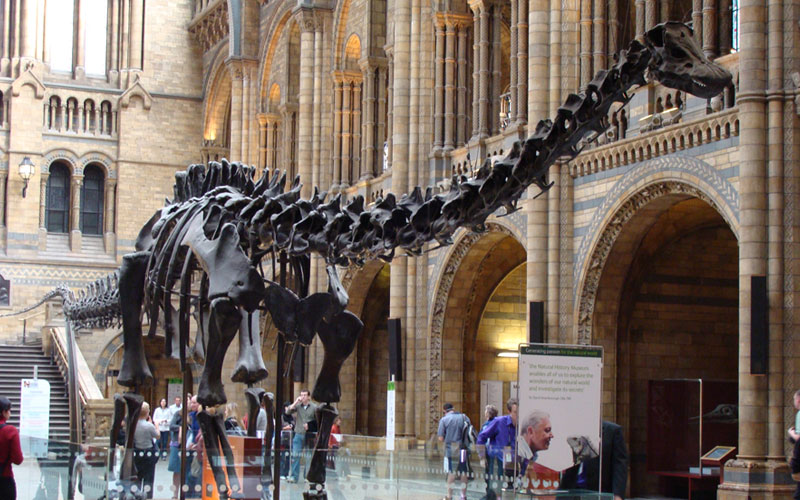The Natural History Museum in London has announced a major programme of transformation it says will mark “a step-change from being a catalogue of natural history to a catalyst for change” in response to the climate emergency.
The scheme to renovate the museum’s celebrated Victorian building and develop a new research and storage facility will build on its aim to turn visitors into “advocates for the planet”, it said on Thursday.
Four existing galleries will be overhauled, including its enormously popular dinosaur gallery, while the museum plans to reopen two long-closed exhibition spaces, one of which, the Old General Herbarium, has not been accessible to the public since 1948.
One of them will house a new permanent exhibition that the museum’s director, Doug Gurr, said would include the most explicit climate messaging it had ever offered. The exhibition, Fixing Our Broken Planet, will have the express aim of “nudging” visitors to change their behaviour, he said.
The new exhibition spaces will be freed up by the creation of a purpose-built storage, research and digitisation centre at Thames Valley Science Park near Reading, to which more than a third of the museum’s enormous natural history collection will be moved from its “unsuitable, unsustainable” current home.
The museum said this was “so we can take better care of it and more easily share its data with scientists all over the world who are finding solutions to problems like climate change, biodiversity loss and food security.
In 2020 the museum declared a planetary emergency, and Gurr said the redevelopment was part of its continuing response. “The best contribution we can make is to create what we call ‘advocates for the planet’. And what that really means is: how do you inspire people at scale to care about nature and to care enough to want to do something about it?
“Of course, we still want people to have a brilliant, fun family day out. But if you can come out of that being a little bit more interested in nature and a little bit more aware of some of the challenges, you’re a bit more likely to want to do something about it.”
The overhaul of the South Kensington site is due to be completed in time for the museum’s 150th anniversary in 2031. The bulk of the funding will come from the government, which has already committed more than £200m to the new collections and research centre, while a further £155m will fund a museum-led programme to digitise natural science collections in the UK. In addition, the museum announced plans to raise £150m from philanthropic and commercial sponsors.

